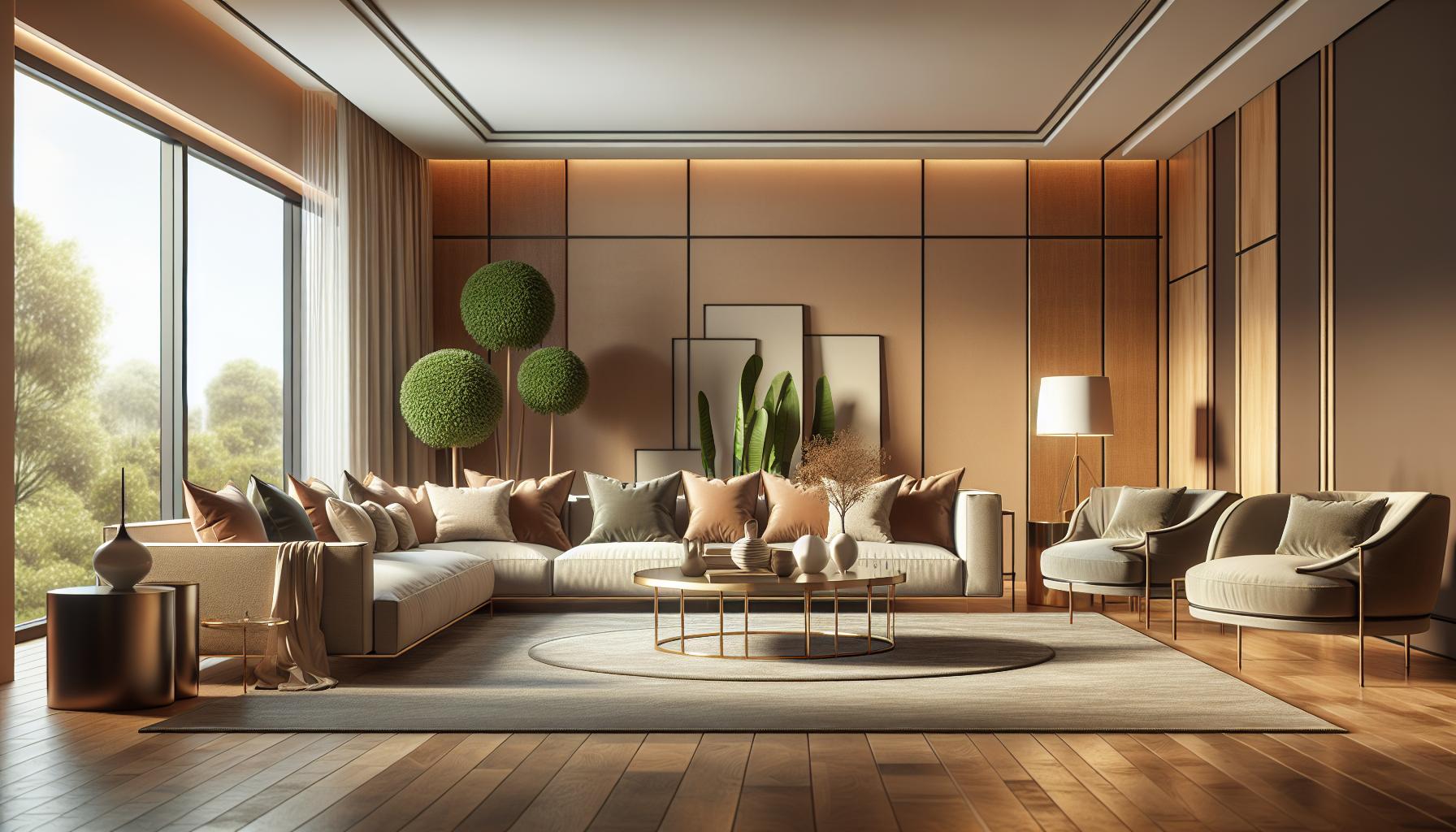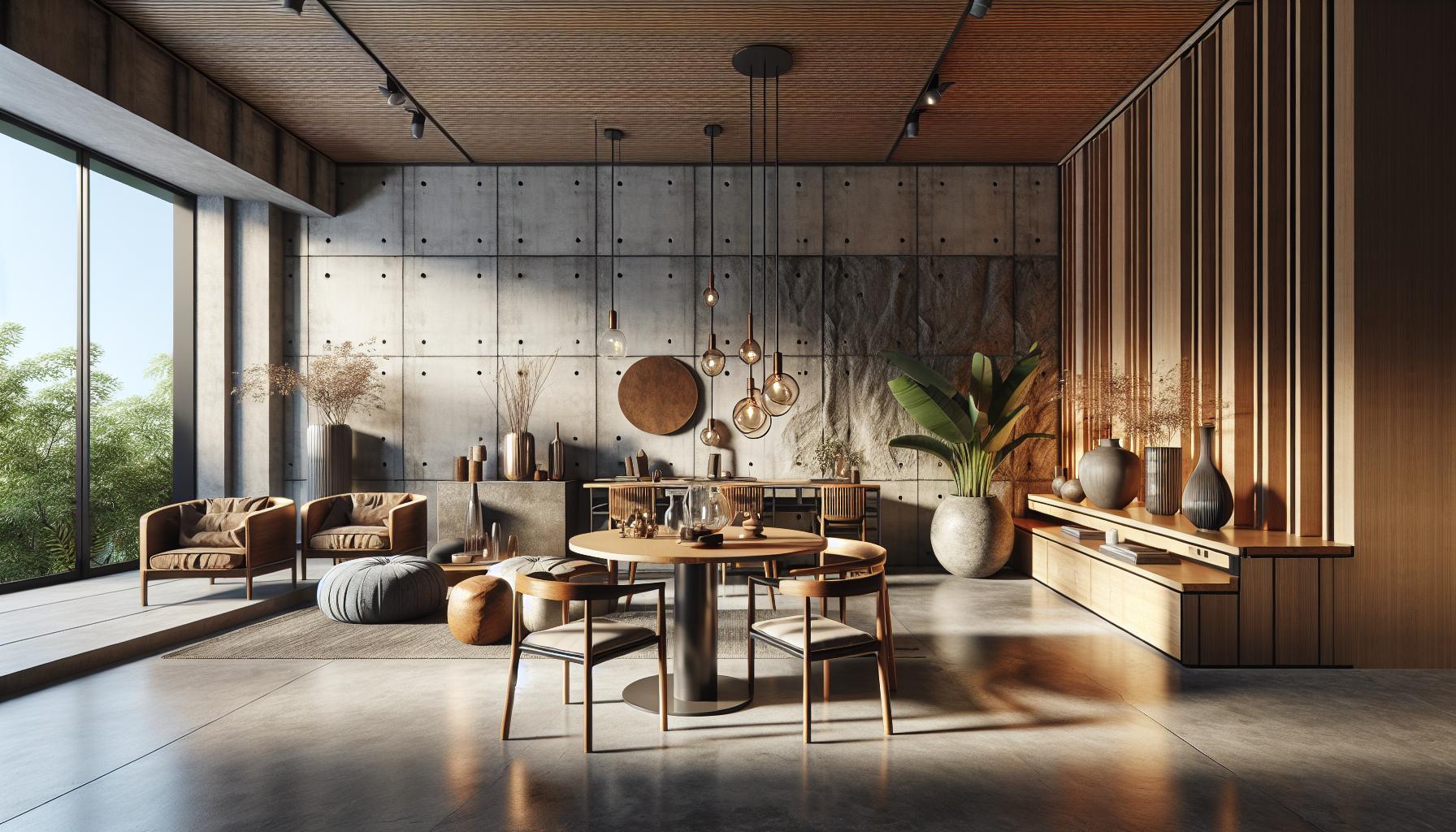Navigating the world of interior design can feel overwhelming, especially with the myriad of terms and jargon that professionals use. From understanding the difference between “minimalism” and “maximalism” to knowing what “feng shui” really means, these concepts shape the spaces people inhabit.
Grasping these interior design terms not only enhances one’s appreciation for aesthetics but also empowers individuals to articulate their vision more clearly. Whether someone is redecorating a room or embarking on a complete renovation, familiarizing themselves with these essential terms can make all the difference in achieving the desired look and feel.
Key Takeaways
- Understanding interior design terms enhances appreciation for aesthetics and empowers effective communication during design projects.
- Key concepts include aesthetic, balance, color palette, focal point, scale, texture, proportion, and zoning, all of which contribute to functional and visually pleasing spaces.
- Color theory plays a vital role in creating mood and harmony through the use of complementary and analogous colors.
- Effective space planning involves the strategic arrangement of furniture to improve flow and accessibility while accommodating specific activities.
- Scale and proportion are essential for achieving visual harmony, ensuring that furniture and decor are appropriately sized for their environment.
- Familiarity with various design styles and movements allows individuals to reflect personal taste while creating cohesive interior spaces.
Interior Design Terms
Understanding interior design terms enhances appreciation for design elements and facilitates effective communication. Here are several key terms commonly used in the field:
- Aesthetic: Defines the visual appeal or style of a space, influencing how design elements like color and form create an ambiance.
- Balance: Refers to the distribution of visual weight in a room. Symmetrical balance involves identical arrangements on either side, while asymmetrical balance uses varied elements for an even effect.
- Color Palette: Consists of a selection of colors used in a design project, setting the mood and coherence throughout the space.
- Focal Point: Identifies a central feature that draws attention, such as a fireplace or artwork, guiding the overall layout of furnishings.
- Scale: Measures the size of furniture and objects in relation to the space, ensuring harmony and functionality.
- Texture: Encompasses the surface quality of materials, contributing to tactile sensations and enhancing the visual interest of a design.
- Proportion: Explains the ratio between elements within a space, affecting the harmony of the overall design.
- Zoning: Involves designating areas for specific activities, such as seating zones or workspaces, to improve functionality and flow.
- Feng Shui: A philosophy that promotes harmony between individuals and their environment, influencing the arrangement and design of spaces.
Familiarity with these terms improves the ability to navigate discussions regarding design concepts and decisions. Understanding these foundational principles leads to a more satisfying and informed approach to interior design.
Essential Interior Design Terms

Understanding essential interior design terms enriches the experience of creating and appreciating spaces. Familiarity with specific concepts facilitates more effective communication and decision-making in design.
Color Theory
Color theory involves the principles governing color harmony, contrast, and the psychological impact of colors. Designers utilize primary, secondary, and tertiary colors to create a cohesive color palette. Complementary colors, positioned opposite each other on the color wheel, amplify each other’s vibrancy. Analogous colors, located next to each other, provide a serene, harmonious look. Additionally, the concepts of hue, saturation, and brightness help convey specific moods and evoke emotional responses in interiors. Effective use of color can emphasize space features and influence occupant feelings.
Space Planning
Space planning refers to the strategic arrangement of furniture and functional elements within a space. This process enhances flow, accessibility, and overall usability. Key components of space planning include understanding traffic patterns, which influence movement throughout an area. Zoning areas for specific activities ensures functionality and comfort. Designers use tools like furniture layouts and 3D models to visualize arrangements, maximizing both space and aesthetic appeal. Effective space planning improves organization and creates visually pleasing environments that meet the occupant’s needs.
Scale and Proportion
Scale and proportion assess the size relationships between objects and their surroundings. Scale identifies the overall size of elements in a space, while proportion considers the dimensions of objects in relation to one another. Maintaining proper scale prevents overcrowding in a room and ensures visual harmony. For example, large furniture pieces can dominate smaller spaces, creating imbalance. Conversely, petite furnishings may disappear in expansive areas, leading to disjointed design. Achieving a balanced composition through thoughtful scale and proportion fosters a comfortable and aesthetically pleasing environment.
Materials and Textures

Understanding materials and textures plays a vital role in interior design. These elements impact the overall aesthetic and functionality of spaces.
Types of Materials
- Wood: Wood offers warmth and versatility. It can range from sleek, modern finishes to rustic, reclaimed styles.
- Metal: Metal brings an industrial feel. Options include steel, aluminum, and brass, commonly used in fixtures and accents.
- Glass: Glass enhances openness and light. It exists in various forms, such as windows, mirrors, and decorative objects.
- Fabric: Fabric introduces comfort and softness. Choices like cotton, linen, and velvet affect both visual appeal and tactile experience.
- Stone: Stone exudes durability and natural beauty. Marble, granite, and slate serve as popular choices for countertops and flooring.
- Concrete: Concrete offers a modern, minimalist aesthetic. It’s often used in flooring and architectural elements for a raw, urban vibe.
- Smooth: Smooth textures create a clean and sleek appearance. Common examples include polished stone or glass surfaces.
- Rough: Rough textures add depth and character. Textured walls or unfinished wood provide a tactile experience.
- ** Matte**: Matte finishes reduce glare and reflectivity. They are often used for paints or fabrics to create a calm atmosphere.
- Glossy: Glossy textures draw attention. High-shine surfaces like lacquer or polished metals can serve as focal points.
- Patterned: Patterned textures introduce visual interest. Textiles with intricate designs or wallpaper with bold prints enhance character.
Design Styles and Movements

Understanding design styles and movements is vital in interior design, as they shape the characteristics and aesthetics of spaces. Various styles reflect cultural changes, technological advancements, and trends over time.
Modern vs. Traditional Design
Modern design emphasizes clean lines, minimal decor, and functional forms, focusing on open spaces and a neutral color palette. It often incorporates materials like metal, glass, and concrete, reflecting a streamlined aesthetic. Traditional design, in contrast, embraces rich decorations, intricate details, and historical references, typically featuring warm colors and classic materials such as wood and textiles. The key differences lie in simplicity versus ornamentation and a focus on functionality versus a connection to history.
Popular Interior Design Movements
Several influential movements shape contemporary design trends. Each movement carries distinct characteristics and philosophies. The following table summarizes key movements:
| Movement | Characteristics |
|---|---|
| Art Deco | Emphasizes luxury, geometric patterns, and rich colors, often incorporating metals and glass. |
| Mid-Century Modern | Highlights organic forms, functional furniture, and a seamless connection to nature. |
| Industrial | Focuses on raw materials, exposed structures, and open layouts, often seen in loft-style spaces. |
| Scandinavian | Features minimalism, functionality, and a light color palette, promoting simplicity and warmth. |
| Bohemian | Encourages creativity and personal expression, infusing vibrant colors and eclectic furnishings. |
| Rustic | Incorporates natural materials, and earthy colors, emphasizing warmth and a connection to the outdoors. |
These movements illustrate the diverse range of aesthetic choices available, allowing individuals to reflect their personal tastes and preferences in their spaces. Familiarity with these styles enhances the ability to create cohesive and appealing designs.
Create a Space That Truly Resonates
Mastering interior design terms is essential for anyone looking to create a space that truly resonates. By understanding concepts like balance, scale, and color theory, individuals can make informed decisions that enhance both aesthetics and functionality.
Familiarity with various styles and materials empowers people to express their unique tastes while ensuring cohesive design. This knowledge not only enriches personal projects but also fosters effective communication with professionals in the field.
Embracing these terms and principles opens the door to a more satisfying and impactful interior design journey.
